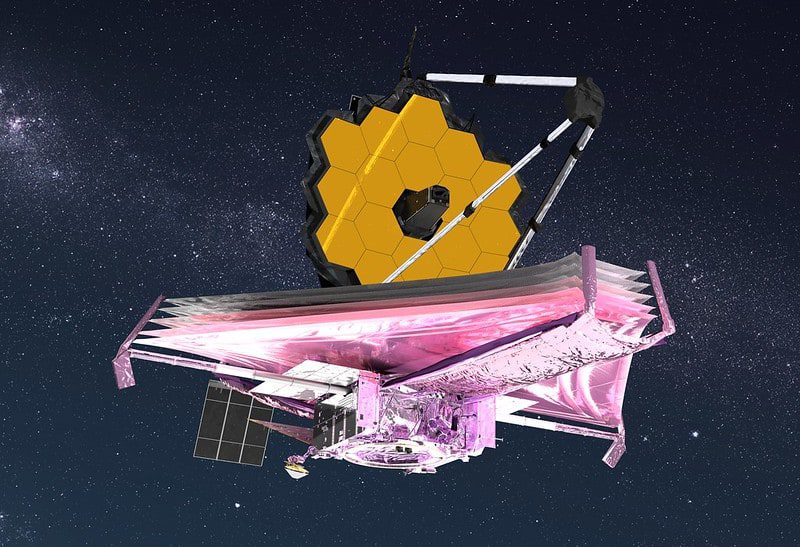This article highlights 10 upcoming space missions that could change our understanding of the universe. These missions include the James Webb Space Telescope, which will allow us to see further and deeper into the universe, and the Europa Clipper Mission, which will explore Jupiter’s moon Europa to study its composition and habitability. The LISA mission involves using lasers to detect gravitational waves and better understand the nature of gravity, while the Mars Sample Return Mission aims to bring back samples from Mars for analysis. Other missions include the Dragonfly Mission to study Saturn’s moon, Titan, and the Breakthrough Listen Initiative to search for signals from other intelligent civilizations.
10 Future Space Missions That Could Change Our Understanding of the Universe
Space exploration has been an integral part of our lives for decades now. It has opened up new frontiers for us and given us a glimpse of what lies beyond our planet. But what lies ahead in the future of space exploration? Will we be able to find answers to some of the biggest questions that have puzzled us for centuries? Here are ten future space missions that could change our understanding of the universe.
1. James Webb Space Telescope
The James Webb Space Telescope (JWST) is set to be the successor to the Hubble Space Telescope. This new telescope is designed to see further and deeper into the universe than any other telescope has before. It is set to launch in 2021 and will be stationed at a point over a million miles from Earth. The JWST will help us uncover some of the mysteries of the universe, such as how galaxies formed, how stars are born, and how planets are created.
2. Europa Clipper Mission
The Europa Clipper Mission is set to launch in the mid-2020s and will be NASA’s first mission to explore Europa, one of Jupiter’s moons. This moon is believed to harbor an ocean beneath its icy surface, and scientists believe that it may be capable of supporting life. The Europa Clipper will use a suite of scientific instruments to study the moon’s surface and subsurface to better understand its composition and habitability.
3. LISA Mission
The Laser Interferometer Space Antenna (LISA) is an ambitious project being developed by a consortium of space agencies, including NASA and the European Space Agency. The mission involves placing three spacecraft in space, forming a triangle with sides of 2.5 million kilometers. The LISA mission will use lasers to detect gravitational waves produced by the collision of massive objects such as black holes. This will provide us with a new way of studying the universe and understanding the nature of gravity.
4. WFIRST Mission
The Wide-Field Infrared Survey Telescope (WFIRST) is NASA’s next flagship mission. It is set to launch in the mid-2020s and will be capable of imaging the entire sky in infrared light. The WFIRST will help us to study dark energy, the mysterious force that is causing the universe to accelerate in its expansion. It will also help us to discover more exoplanets by surveying a large portion of the sky.
5. Europa Lander Mission
In addition to the Europa Clipper Mission, NASA is also planning a Europa Lander Mission in the 2030s. This mission involves sending a lander to the surface of Europa to study its composition and search for signs of life. The lander will have to be capable of withstanding the extreme conditions on the moon’s surface, including harsh radiation and temperatures that can drop below -280°F (-173°C).
6. Mars Sample Return Mission
The Mars Sample Return Mission is a joint mission being developed by NASA and the European Space Agency. The mission aims to return samples from the surface of Mars to Earth for detailed analysis. Scientists believe that these samples could help us to better understand the geology and history of Mars and even provide evidence of past or present life on the planet.
7. Dragonfly Mission
The Dragonfly Mission is set to launch in 2026 and will be NASA’s first mission to explore Saturn’s moon, Titan. The mission involves sending a drone-like rotorcraft to the moon’s surface to study its environment and chemical composition. Titan is believed to be similar to the early Earth, and studying it could help us to better understand the conditions that led to the emergence of life on our planet.
8. PLATO Mission
The PLAnetary Transits and Oscillations of stars (PLATO) mission is being developed by the European Space Agency (ESA) and is set to launch in the mid-2020s. The mission will use a suite of telescopes to search for and study exoplanets. It will focus on stars similar to our sun, allowing us to better understand how common Earth-like planets are in the universe.
9. Skylight Mission
The Skylight Mission is a project being developed by the Breakthrough Initiatives initiative. The mission aims to send a spacecraft to the Alpha Centauri star system, which is the closest star system to our own. The spacecraft will use a high-power laser to propel tiny spacecraft, known as StarChips, to the star system. This would be the first time that humans have sent a spacecraft beyond our solar system.
10. Breakthrough Listen Initiative
The Breakthrough Listen Initiative is a project being led by the Breakthrough Initiatives initiative to search for signs of intelligent life beyond our planet. The project involves using advanced radio telescopes to scan the skies for signals from other intelligent civilizations. The project is still in its early stages, but it could potentially lead to one of the greatest discoveries in human history.
Conclusion
These ten future space missions are just the beginning of what promises to be an exciting future of space exploration. They could help us to answer some of the biggest questions that have puzzled us for centuries and even provide us with new questions to explore. Through these missions, we will continue to push the boundaries of what we know about the universe and our place within it.
